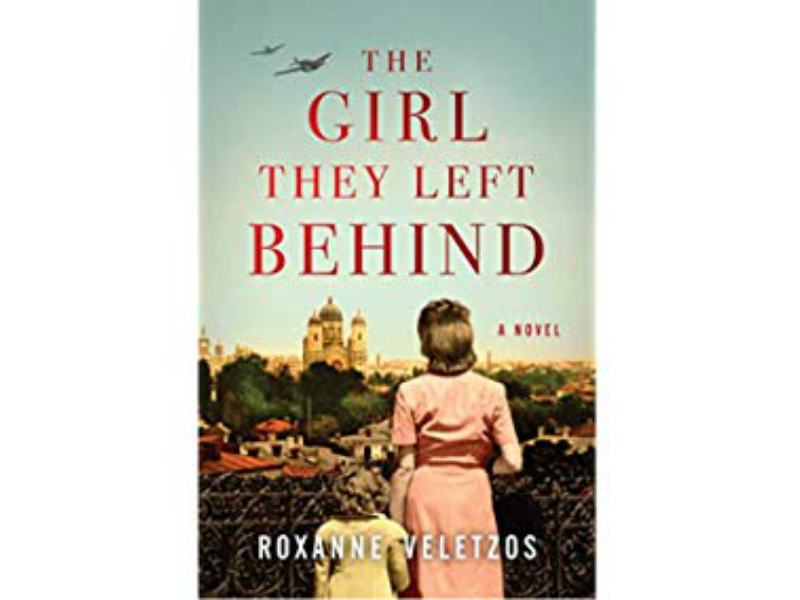Canadian professor, parliamentarian and human rights specialist Irwin Cotler once famously noted that the countless cruelties of the Shoah were too horrific to imagine but not, alas, to have actually happened.
Whenever one reads of the resistance and rescue from the industrialized murder that was the Shoah, indeed from any such form of calculated, genocidal brutality, Cotler’s observation haunts. Decency – at least in most of us – simply repels the mental reconstruction of such barbarity. Instead, it embraces the kindness and goodness that many individuals courageously extended to fellow human beings despite, or perhaps because of, the ubiquitous cruelty.
The Girl They Left Behind begins with such an act of kindness.
The concierge of an apartment building finds a young girl – three or four-years old – shivering on the front door steps in the cold winter air of Bucharest in January 1941. The woman has no doubts why the girl was abandoned in the alcove of the building. For at that moment, in another part of the city, the violently fascist Iron Guard militia thugs were in the midst of what would be a three-day pogrom against the city’s Jews. Thousands of Jews were dragged into the streets, humiliated, vilified and tortured. One hundred and twenty-five were murdered.
Unlike the Iron Guard marauders, their accomplices or the many ordinary men and women who avert-their-eyes, this woman acts. She takes the girl to an orphanage; a generous, loving, childless, non-Jewish couple soon adopt the child.
With this profoundly moving scene as her literary launchpad, Veletzos has written a historical novel that occasionally soars. She imagines in eye-opening, colourful detail the daily, wary lives of this newly created family unit. She also deftly tells the story of the child’s birth parents and, incrementally, reveals the wretched circumstances surrounding their sorrowful decision to abandon their daughter.
Veletzos ultimately arranges the many fragile porcelain pieces of the combined lives of the two sets of parents onto an ethereal canvas. They form a circular mosaic of sorts with their shared young child, Natalia, at the centre. The reader is left to wonder: will the pieces mesh into a survivor’s well-lived portrait? Or, like so many other stories of the lives devastated by the Nazis, will they collide as severely damaged sharp shards where soothed souls were meant to exist?
At one point, when little Natalia becomes gravely ill and there is apparently nothing more the child’s adoptive parents – Anton and Despina – can do to save her life, an unforeseen intervention brings a new spark of possibility for Natalia’s recovery and brings them back too from their immobilizing despair. Anton’s thoughts settle upon Natalia’s birth parents.
“This is what it must have been like for them, too, the people who had given Natalia life, when she had been snatched from their hands. They were sharing a common fate. Even though he had never known them and never would, the magnitude of what they had done to save her … hit him straight on, and he grasped with a start they would always be bound by a common love for her. It was not fear they should be regarded with but thankfulness for the gift of Natalia, for the gift of her life, and ultimately, for their sacrifice.”
READ: FROM THE SOVIET GULAGS TO SANCTUARY IN TEHRAN
In addition to the absorbing story that she has crafted for readers, Veletzos is to be commended for providing a historical glimpse into two repugnant but very real worlds: Nazi Germany-allied fascist Romania during the Second World War and then Soviet-controlled, totalitarian Romania in the decades after the war.
The author describes the increasing hardship and deteriorating physical conditions of the family’s life during the war. Their religion, of course, spared them from the Nazis and their Romanian collaborators. But nothing could spare them from the encroaching Red Army.
Veletzos sharply describes the merciless totalitarian political reality that swallowed Romania in November 1948. “A new border stretched over the continent. A wall of barbed wire, behind which all the grand cities of eastern and central Europe found themselves hostage, ruled by checkpoints, guarded by watchdogs and Soviet armoured tanks. In Bucharest, all the country’s former leaders and members of the royal parliament had been arrested or imprisoned, some sent to forced-labour camps in remote Siberia.”
With a cynic’s sense of irony and a writer’s grasp of pathos, she adds: “Do you know we are to be called a People’s Republic?” the stunned citizens of Bucharest whispered on street corners, at bus stops, at flower stands where they could still talk in whispers. “Do you know our new prime minister was appointed by Stalin himself?
“The new reality had been shaped around them not with the slow progression of change but with the sharp precision of the guillotine, severing them from everything they knew to be true and familiar.”
And the state’s blade cuts with pre-planned precision and inhuman indifference into Natalia’s family as well. They are watched, monitored, persecuted and degraded. The secret police – the Securitate – violates their lives with practiced cruelty. By then a teenager, Natalia observes the ubiquitous, evil presence.
“Whatever her father was accused of, it didn’t matter. Whatever the reason, there would be a sham trial resulting in a sentence without the right to defence, or an immediate transfer to a forced-work camp. The gulag, Natalia had heard people call this place, where people…were sent and from which no-one ever returned.”
The author has written a fictionalized version of her mother’s story that we are told is “based on true events.” The reader knows this from the outset. Thus, it is the manner not the fact of Natalia’s rescue that comprises the narrative heart of The Girl They Left Behind.
Veletzos is clearly a skilful writer. This is her first novel and worth reading.
